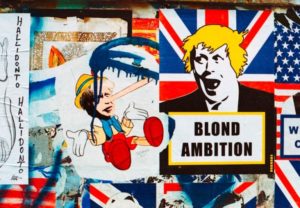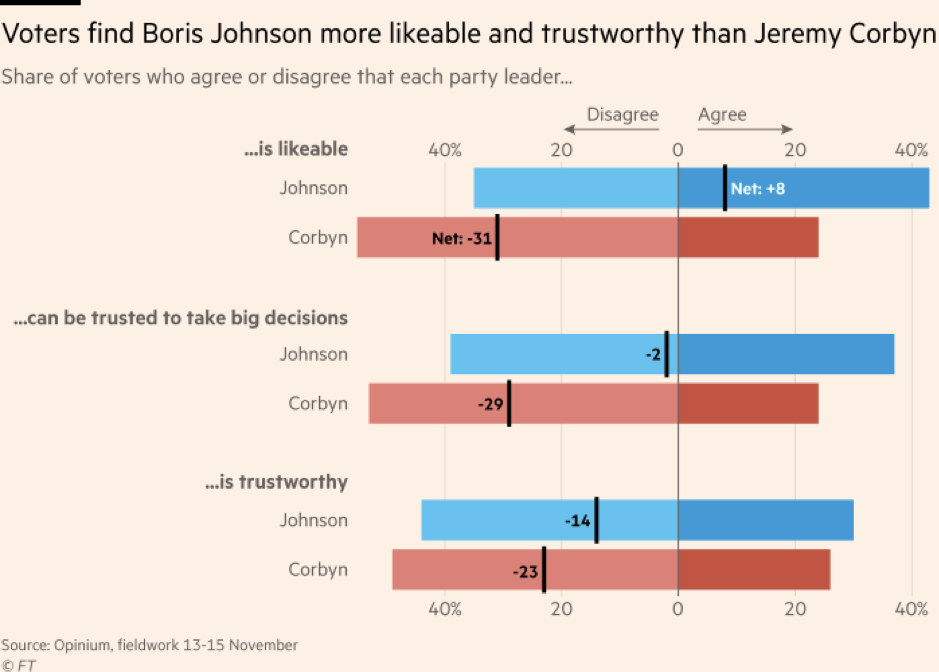 Leadership relies on trust. But how can we learn from politician’s – often carefully crafted – public personas and apply it to our own professional image?
Leadership relies on trust. But how can we learn from politician’s – often carefully crafted – public personas and apply it to our own professional image?
Multiple scientific studies imply that humans are biologically wired to trust their first impressions.
You have seven seconds (or less) to exude trustworthiness and competence during a first meeting – what you do immediately on meeting someone is crucial. In the digital age, friendly faces, warm video presentation or reassuring voices become more important when it comes to trusting someone.
Research demonstrates bad first impressions are not only tough to shake, but also have the tendency to create a self-fulfilling feedback loop – if you make a poor first impression, the other person is likely to act in an unfriendly or aloof manner towards you, you’re more likely to reciprocate, and things will go downhill from there.
The saving grace here is that the same thing goes for good first impressions. Get it right and it could be the beginning of something reciprocally beautiful!
Why we Need Leadership and Trust
Evolutionary biology provides one explanation of our need for leadership. The animal world in which we used to exist was a competitive and uncertain environment requiring speedy decision-making when resolving disputes, distributing limited resources or dealing with predators. The easiest way of making a fast decision would be to choose a leader.
Our modern world now appears increasingly complex to us and with it, we’ve seen the emergence of strong leaders with big characters. We need to defer authority to these people and trust that they will look out for our general wellbeing.
It stands to reason that for them, creating trust and enabling us to transfer authority to them is key and that the first impression, with its disproportionate ability to create an ongoing positive or negative relationship, is a crucial consideration.
Politics is Emotional
We like to think we make our votes rationally but actually, emotion is a far greater driver of our decision than we’d like to think. The first impression is important but it seems that the last impression is also crucial in politics as:
It’s interesting to note that although we want to trust our politicians (only 19% of people in the UK say they trust them to tell the truth), the rise of politicians with a somewhat tangential relationship to the truth shows that telling the truth and being trustworthy are not necessarily the same thing. The Trumps and Johnsons of the world are lauded by supporters for ‘telling it like it is’, even when their factual recall is often proven to be incorrect.
The politics here is not the point. It’s the way they convey their trustworthiness that is. See this comparison of Johnson and Corbyn from the Financial Times from before 2019’s election:

It’s evident that in Johnson’s case, whether he tells the truth or not is irrelevant to voters. They like him, trust him to make big decisions and believe that he has Britain’s interests top of mind.
How Politicians’ Portrayal Affects How We Vote
So if we’re not necessarily looking for someone who tells the truth (and we probably don’t believe them even when they do), what is it that we look for in a leader and what do they need to show us to prove their capacity to lead?
It’s authenticity that attracts voters. Trump and Johnson are both instructive in this regard. The 2016 US Presidential election saw a large swing in perceived trustworthiness from Hilary Clinton to Donald Trump in just 5 months. This was put down to Trump’s spontaneity and lack of preparedness when speaking, both in debates and at rallies, compared to Clinton’s heavily scripted and rehearsed speeches. In this respect, planned communication has been found to come across as deceptive in academic studies – Trump’s shooting from the hip endeared him to many voters.
Johnson has similarly come across as unprepared and ill-informed throughout his political career. He offsets this impression by coming across as amusing and likeable in his dealings with the media, perhaps cementing his status as ‘Boris’ with a series of appearances on the popular panel show Have I Got News For You where he proved he could keep up with acerbic professional comedians.
The imagery around the two is also authentic. Political images are so quickly shared, political photos need to be as trustworthy as possible. The potential for mockery and distrust is so high, it’s crucial that a leader’s personal characteristics are conveyed through their imagery and photography.
Even photos that could previously have been regarded as embarrassing are now evidence of their realness – Johnson hanging in a harness or Trump and his various hair related mishaps. The impression that they are real people, not airbrushed politicians, has no doubt helped them with voters. Again, a demonstration of personality does much more for them than a veneer of perfection would do.
Classic displays of a candidate’s trustworthiness, the family photo spread or carefully staged campaign images, have taken a back seat to things like appearances on late night chat shows, engaging with pop culture and understanding social media – all activities that test a person’s authenticity. It’s hard to remain on message all the time if you’re not displaying some sort of truth about yourself and if you get it wrong, it’s never been easier to share your dishonesty to a large audience.
Essentially to be a trusted leader, you need to be a real person – be authentic in your dealings with people and with your imagery.

